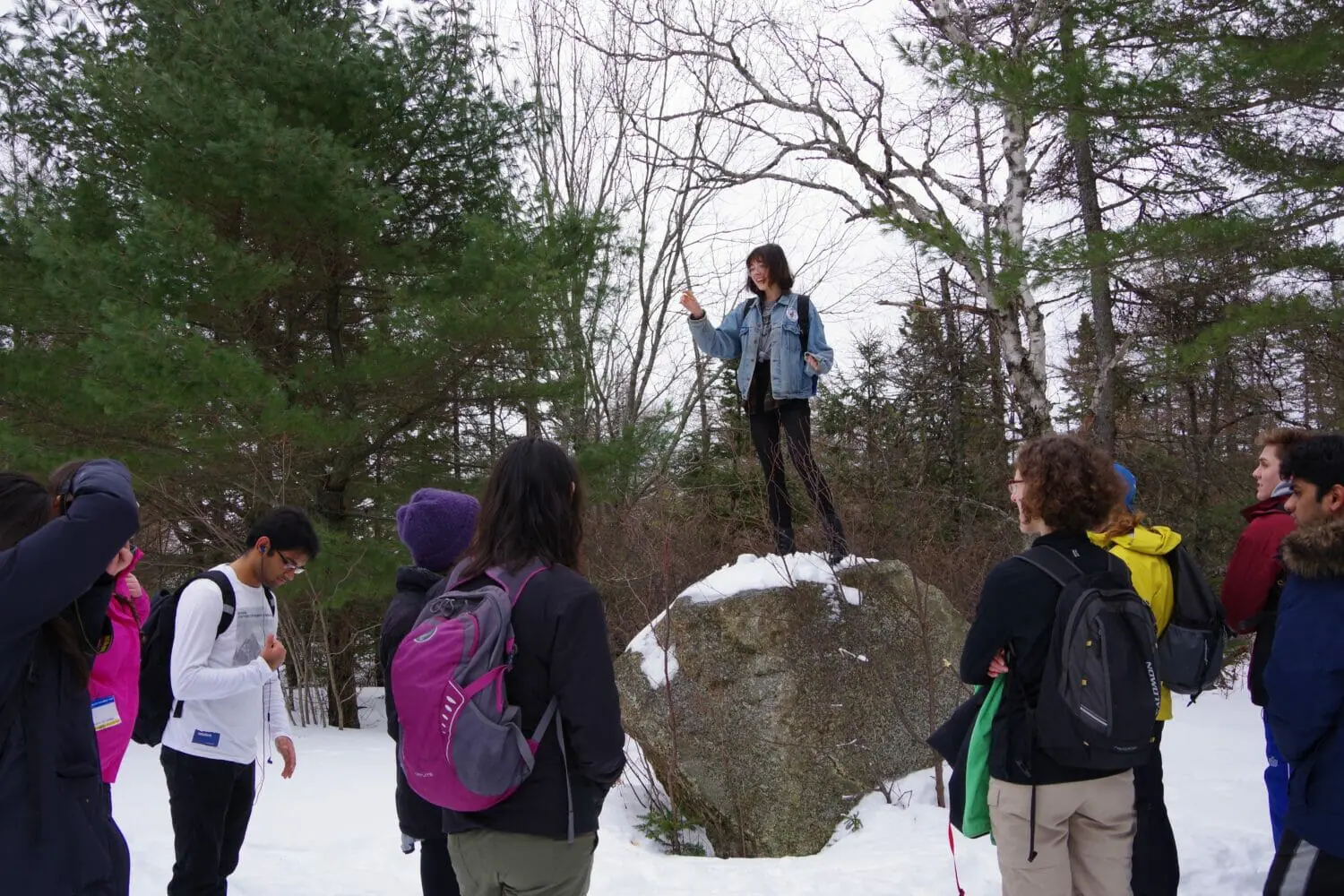It’s a mild Sunday morning just before Reading Week. Twenty students pile into a Metro Transit bus, filling the near-empty vehicle with their chatter.
The group includes first-time hikers and trail veterans. They’re heading out on a nine-kilometre winter hike to the Bluff Wilderness Trail, organized by Trips by Transit.
Formerly known as Adventure by Bus, Trips by Transit was founded in 2015 by Dalhosuie student Patrick Bondy.
Bondy was inspired by British adventurer Alastair Humphreys and his idea of the “micro-adventure,” an adventure that is less than 24 hours long.
“I wanted to make a similar effort here in Halifax to help more people get outside easily and cheaply,” Bondy says.
All that’s needed to take part in Trips by Transit is a bus pass or some cash, sturdy shoes, water, food, some extra layers and a sense of adventure.
A number of wilderness areas are accessible by bus, even in winter. Since January, Trips by Transit has led adventures to places like Kearney Lake, York Redoubt and the Backlands.
Kathleen Olds leads today’s trip. She became involved with Trips by Transit in fall 2016.
“The idea of connecting people with wilderness spaces in a way that’s really accessible to those who don’t normally have access to it resonated with me a lot,” she says.
Connecting people with each other, as well as the natural world, is part of Trips by Transit’s mission.
“On our trips we typically stop and have a conversation about nature, our place in nature, and how we experience the world in nature,” Bondy says. “Those are often powerful conversations.”
Olds points to research that reveals the positive impact of spending time in nature on people’s mental and physical well-being.
“By using the resources that are available to us to connect people with the natural world again, we can reduce stress, increase emotional and social well-being, and decrease that feeling of alienation and isolation that sometimes comes with the student life,” she says.
It’s around noon when the students hit the trail, slipping and sliding in the melting snow.
By early afternoon, footwear is soaked through and sweatpants are darkened up to the knees.
The dampness and the slips and falls are all taken into stride, but just in case, the trip leaders carry spare clothing, food and first aid kits. Participants are expected to be reasonably well prepared.
“Accessibility is important, but also safety is really important,” Olds says.
After the hike, the students gather at the bus stop to wait for the ride home.
The bus ride, Olds says, is just as much part of the adventure as the hike. Trips by Transit has also organized other types of adventures like visiting thrift shops by bus.
“It’s about community engagement and showing people what they can access with what they have,” she says.
One of the next trips the organization is planning is an excursion to Blue Mountain Birch Cove, an area that was saved from a development project in the fall but still isn’t officially protected.
By bringing people out to these types of spaces, Bondy says Trips by Transit can play a role in raising awareness and promoting conversations about natural areas.
Mira Chiasson writes in partnership with the Dalhousie Gazette and the Dalhousie Student Union Sustainability Office (DSUSO).


Recent Comments